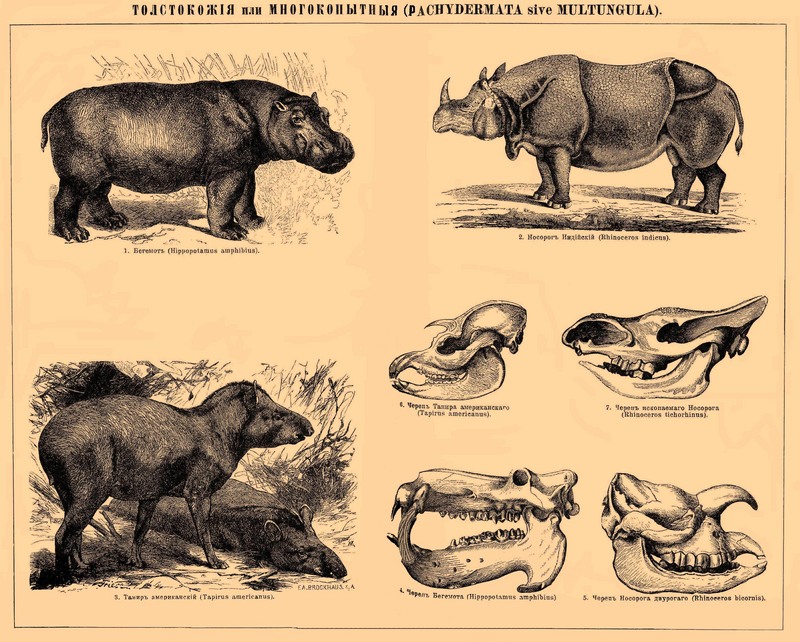common hippopotamus (Hippopotamus amphibius), Indian rhinoceros (Rhinoceros unicornis), South American tapir (Tapirus terrestris) Hippopotamus amphibius
Rhinoceros indicus = Rhinoceros unicornis
Tapirus americanus = Tapirus terrestris
Skulls:
- Tapirus americanus = Tapirus terrestris
- Rhinoceros thichorhinus = Coelodonta antiquitatis
- Hippopotamus amphibius
- Rhinoceros bicornis = Diceros bicornis
Русский: Иллюстрация из энциклопедического словаря Брокгауза и Ефрона (1890—1907)
English: Illustration from Brockhaus and Efron Encyclopedic Dictionary(1890—1907)
Date between 1890 and 1907
Source reproducrion from DVD http://www.iddk.ru/ru/cdrom/73147.html
Author painter from Brockhaus and Efron Encyclopedic Dictionary
Source: https://commons.wikimedia.org/wiki/File:Brockhaus_and_Efron_Encyclopedic_Dictionary_b5_256-0.jpg
The common hippopotamus (Hippopotamus amphibius), or hippo, is a large, mostly herbivorous mammal in sub-Saharan Africa, and one of only two extant species in the family Hippopotamidae.
The Indian rhinoceros (Rhinoceros unicornis), also called the greater one-horned rhinoceros and great Indian rhinoceros, is a rhinoceros native to the Indian subcontinent. The Indian rhinoceros once ranged throughout the entire stretch of the Indo-Gangetic Plain, but excessive hunting and agricultural development reduced their range drastically to 11 sites in northern India and southern Nepal.
The South American tapir (Tapirus terrestris), Brazilian tapir (from the Tupi tapi'ira), lowland tapir or (in Portuguese) anta, is one of five species in the tapir family. The lowland tapir is the largest surviving native terrestrial mammal in the Amazon.
The woolly rhinoceros (Coelodonta antiquitatis) is an extinct species of rhinoceros that was common throughout Europe and northern Asia during the Pleistocene epoch and survived the last glacial period. The genus name Coelodonta means "cavity tooth". The woolly rhinoceros was a member of the Pleistocene megafauna.
